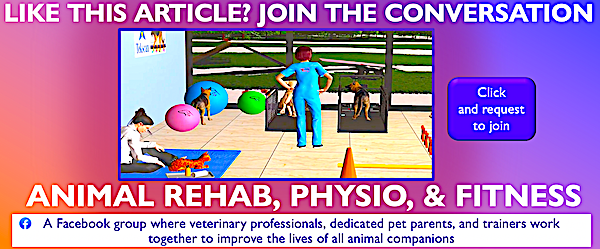
A CCL injury in dogs is the most common reason for canine orthopedic surgeries. Dogs tear or rupture their CCL (cranial cruciate ligament), also called ACL, through running, jumping, and heavy impact. A CCL injury can also be due to a congenital knee condition called patellar luxation, which is more common in small dogs.
No matter the cause, a torn CCL is painful and can lead to permanent lameness when not treated. The team at Oakland Veterinary Referral Services wants to give our readers a better understanding of CCL injuries and how we treat them.
CCL Injury In Dogs
The CCL is a connective tissue in the knee that stabilizes the lower leg to the upper leg. It connects a dog’s tibia, the bone beneath the knee, to the femur, the bone above.
CCL injuries in dogs often occur due to overexertion in certain types of higher impact exercise. Dogs who are more athletic are prone to CCL injuries, just like human athletes who often rupture the CCL in their knees. Some pets tear their CCL doing something as simple as a sudden movement or by jumping off the bed.
Symptoms of CCL injuries in dogs include:
- Lameness or limping
- Favoring one leg
- Stiffness after exercise
- Swelling around the knee
- Difficulty lying down or getting up
- Pain or tenderness near the injured knee
Many times, these symptoms come on gradually, with symptoms and lameness progressively worsening over time.
Diagnosing CCL Trauma
One of the key indicators of a CCL injury in dogs is the “drawer sign”. During your pet’s examination, your veterinarian will assess your dog’s leg by holding the femur in place while moving the tibia out. If it moves in a manner that is like opening a drawer, the slide-out motion is a telling sign that your pet’s CCL is injured.
Once your vet has physically examined your dog, they will order X-rays to determine the severity of the injury and if there is fluid in the joints, or arthritis. There is a big range in the level of injury seen in CCL injuries. These include a partial tear that involves the meniscus, a full tear, or a full tear with a secondary meniscus tear. Even partial tears vary by grade.
This is why the severity of each dog’s CCL injury to the ligament and surrounding supportive structures determines whether surgery is necessary. If your dog requires surgery, your vet may refer you to a veterinary surgeon who specializes in orthopedic surgeries.
Dog CCL Surgery
There are four common exploratory and surgical procedures to correct a CCL rupture in dogs. These include:
- Lateral suture or extracapsular – Often recommended for small to medium sized dogs, this surgery stabilizes the stifle (knee) through the use of sutures placed on the outside of the joint. This is one of the most frequently performed surgeries for this type of injury and is suitable for dogs under 50 pounds.
- Anthroposcopy – Arthroscopy is a minimally invasive means of visualizing the structures of the stifle, the cranial and caudal cruciate ligaments. The technique offers enhanced visualization and magnification of the joint structures. This technology allows for minimal surgical incisions for partial CCL and meniscus tears.
- TPLO (Tibial Plateau Leveling Osteotomy) surgery – TPLO surgery has become more popular and is the best option for large breeds. The procedure entails cutting and leveling the tibial plateau. From there, the surgeon stabilizes the tibial plateau using a plate and screws. This surgery eliminates the need for the ligament itself.
- TTA (Tibial Tuberosity Advancement) – TTA also corrects the need for the CCL by cutting the top of the tibia, moving it forward, and stabilizing it in its new position using a plate. Therefore, the goal with TTA is to replace the function of the ligament entirely, rather than repairing it.
Your veterinary surgeon can advise you on the best surgical options for your sweet pup. In dogs under 30 pounds, there are cases of recovery without surgery through rest, antiinflammatories, and physical rehabilitation. Much depends upon the size of your pet, their overall health, and the severity of your dog’s CCL injury.
Author: OVRS Staff


